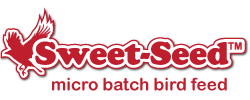How to Provide Calcium for Nesting Birds...and Why It's Important

After decades of milk promotion programs it is no surprise that calcium is a vital part of a healthy human diet, but few people realize it is also essential for birds. But are your backyard birds getting enough calcium?
Why Birds Need Calcium
Calcium serves several purposes in birds' diets. Not only is it vital for strong bones, but it is also critical for proper nerve function. Most importantly, however, proper amounts of calcium are needed for eggshell production. If female birds do not have enough calcium in their diets, several things could happen…
- Eggshells may not be thick enough and could too easily crack when the immature eggs are being incubated, killing the chick.
- Chicks may die in the egg because a thin eggshell does not properly exchange gasses and can cause problems with development.
- Chicks may hatch with severe bone deformities that lead to death or make the hatchlings susceptible to predators.
- Female birds may lay fewer eggs overall, resulting in lower brood sizes and less general breeding success in the population.
With calcium being so critical for nesting and breeding success as well as the health of adult birds, it is vital that birds have enough calcium in their diets.
How Birds Find Calcium
Birds have many techniques to add more calcium to their diets. In many species, birds begin to seek out rich natural sources of calcium in early spring as the breeding season begins, and they continue to enjoy rich calcium sources throughout the summer. While some insects, such as beetles and millipedes, are naturally higher in calcium, breeding birds need to get even more calcium than these insects can provide. The most common sources of calcium birds will take advantage of include…
- Snail shells, including small snails that are eaten whole as well as picking larger shells apart
- Shed deer antlers, which can be gradually chipped apart or picked at even by small bills
- Sand, small gravel and dirt that is also useful as grit to aid digestion
- Carrion bones and the marrow deep within them when the bones are cracked by predators
- Mortar and lime between brick or rock walls
- Eggshells of birds or other creatures
Birds may also eat the eggshells of their own chicks. This not only helps replenish the adult bird's calcium, but keeps the nest clean and gets rid of the evidence that there are vulnerable hatchlings nearby.
Adding Supplemental Calcium to Your Feeders
Backyard birders can easily add calcium-rich food sources to their bird feeders to help give birds the most nutritious diet possible. Some birdseed mixes are enriched with calcium – often with crushed shells blended into the mix – but there are other easy ways to give birds calcium.
The most common option is to gently roast chicken eggshells. Rinse the shells so there is no fluid or membrane left in them, then roast them 10-20 minutes in an oven set at 250 degrees or on a low setting. The shells should not be browned or burned, but they will become more brittle, making them easier for birds to eat. After they are cool, crush the shells gently into very fine pieces that will be easy for even small birds to handle. The pieces can be mixed into the seed you regularly offer birds in different feeders, or can be put in a special tray that is accessible to different species. Crushed eggshells can even be sprinkled directly on the ground for birds to take, and the shells they aren't interested in will make excellent compost to nourish flowerbeds, gardens or lawns. If you don't have eggshells available, you can use ground oyster shells in the same way.
If you want to provide even more natural sources of calcium, consider…
- Encouraging snails to thrive in your yard and garden so they are available for birds to eat. You may need to adjust the acidity of your soil to be sure it is a favorable environment for snails.
- Providing an antler for the birds to peck, either in a tray or platform feeder or elsewhere in your yard. This can also make a great perch for birds.
- Create a small grit patch for birds to visit, and include not only suitable sand and gravel, but also fine eggshell pieces that birds can easily take.
For the healthiest bird diets, provide different sources of calcium from early spring through late summer. Birds breed at different times, and birds that have multiple broods may need to ingest more calcium for several weeks during the breeding season. From bluebirds and chickadees to swallows, orioles, kinglets and more, your backyard birds will be healthier and grateful for the calcium you provide.
Image by Peggychoucair from Pixabay
